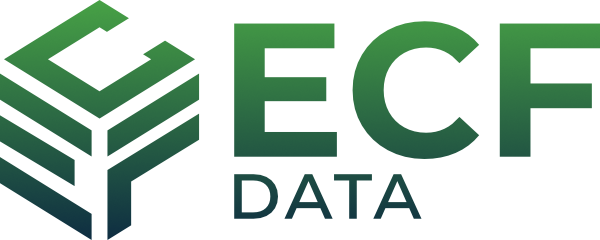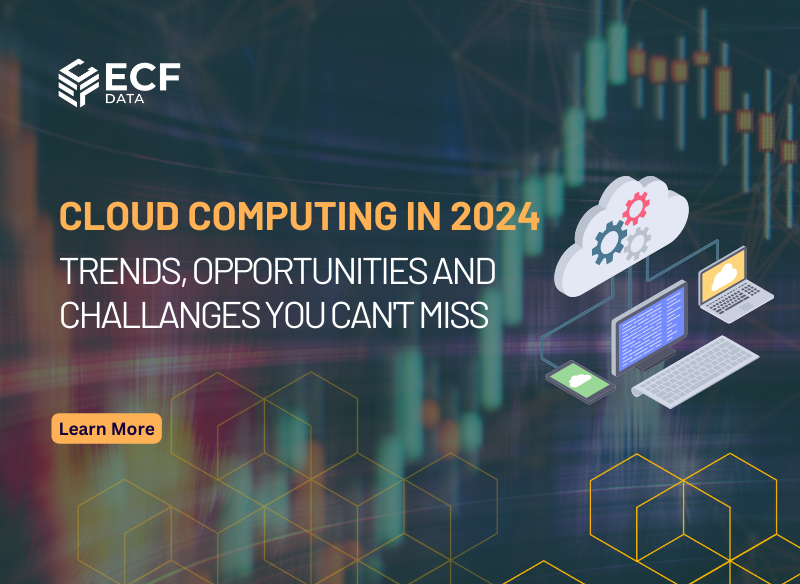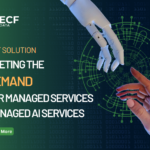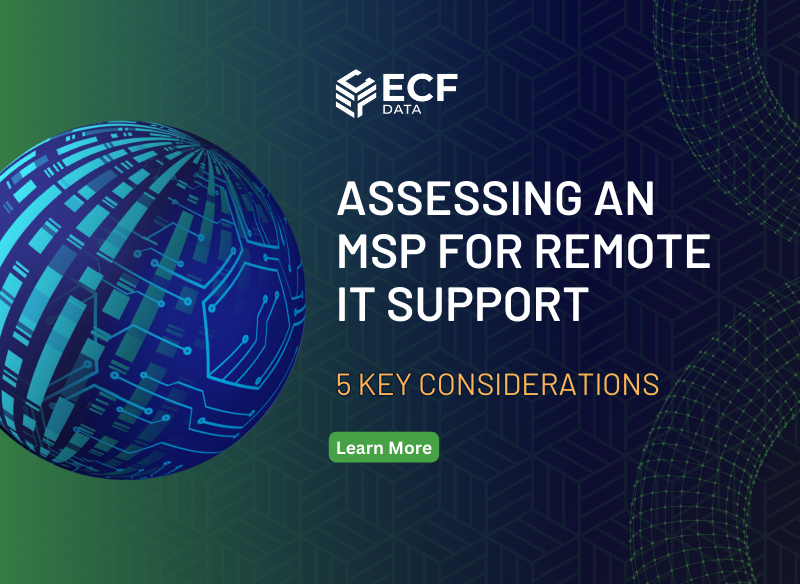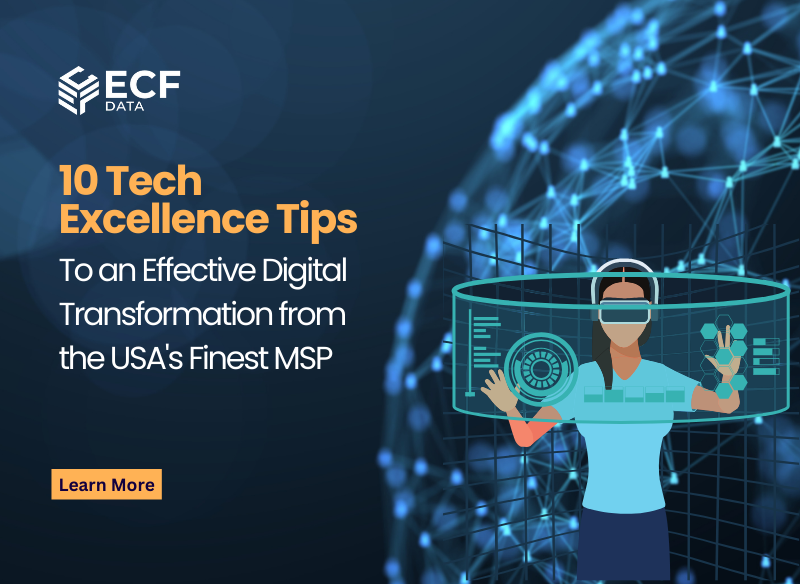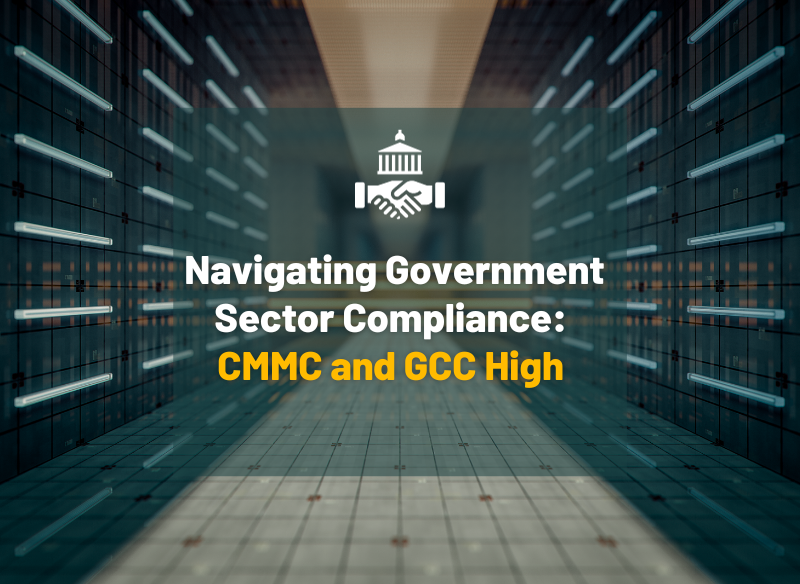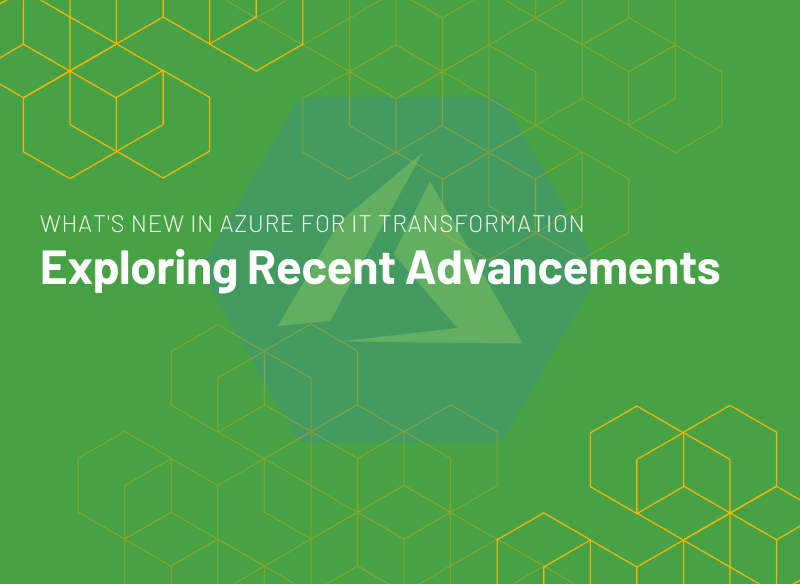-
By: Kanika Vishwakarma
- IT Consulting
- February 15, 2024
- Comments 0
Cloud Computing 2024: Key Trends and Challenges
Cloud computing remains pivotal in transforming and innovating business operations in the fast-changing technology landscape. To stay ahead in 2024 and in future years, it is crucial to understand the latest trends, opportunities, and challenges in cloud computing.
This blog explores the growing range of cloud services and highlights critical trends shaping the industry and its business values. It signifies the start of a new era in cloud computing.
Explore the realm of cloud computing and see how its services are transforming various industries. Prepare to unleash unprecedented potential and navigate the dynamic landscape of cloud computing in 2024.
2024 Cloud Computing Trends to Keep an Eye On
The field of cloud computing is ever evolving, and we can expect considerable progress in the year 2024. Companies and providers are preparing for a new phase of innovation, challenges, and promising opportunities. In the upcoming year, we can anticipate crucial advancements that will build on the progress of integrating cloud, cybersecurity, and AI that occurred in 2023.
Artificial Intelligence (AI), Generative AI, and Machine Learning (ML)
The integration of AI, Generative AI, and ML into technological infrastructure is a solution that enables businesses to automate tasks, make data-driven decisions, and personalize customer experiences. According to recent studies, companies are predicted to increase their usage of AI by 50% by the end of 2024. The highlight of this is responsible and ethical AI practices.
Evidence aims to provide advisory, build, and manage services in partnership with hyperscalers. They utilize AI/ML models to address complex business problems. The projected impact of AI adoption on cloud customers is up to 85% concerning decision-making, automation, and efficiency.
Benefits:
- Improved creativity, content creation, and automation for various industries.
- Better decision-making through data-driven insights.
- Personalized customer experiences and targeted marketing strategies.
Compatibility and Mobility
Interoperability and portability encompass the platform’s ability to facilitate efficient communication, data sharing, and collaboration. They enable seamless deployment, transport, and management of workloads, applications, and associated data by customers and Global System Integrators (GSIs). They can do this across various cloud environments, regardless of the provider (such as Azure, AWS, GCP, VMWare) and the type of configuration (public or private cloud).
According to Gartner’s projection, around 75% of clients will embrace multi/hybrid cloud solutions. Thus, it emphasizes the importance of portability and interoperability.
Benefits:
- Enhanced flexibility and agility in managing workloads, apps, and data
- Cost efficiency through intelligent planning, scaling, and management
- Decrease in vendor lock-in risks and optimization of features, options, and pricing
Using Multiple Clouds and Distributed Cloud Approaches
Companies adopting multi-cloud and distributed cloud strategies aim for better performance. Simultaneously, they seek to mitigate vendor lock-in risks and enhance resilience. These strategies allow for a seamless customer experience in sales, service, and marketing.
It also enables the expansion and transformation of digital capabilities. Using multi-tenancy-based cloud solutions and dynamic provisioning contributes to sustainability and cost optimization. According to Flexera’s survey, 74% of enterprises have already adopted a multi-cloud strategy.
Benefits:
- Freedom to choose the best cloud provider for specific needs.
- Reduced vendor lock-in and increased bargaining power.
- Enhanced resilience and disaster recovery capabilities.
Cloud Security
As businesses increase their sensitive data and cloud storage, ensuring cloud security becomes crucial. Cloud providers are investing heavily in security solutions to protect customer data. Concepts like zero trust-as-a-service and easy-to-use foundations hosted in the cloud will gain more popularity.
Global System Integrators (GSIs) will collaborate with vendors to offer end-to-end managed security services, such as Microsoft Security Co-pilot.
The mix of AI, Gen AI, and large language models (LLM) trained on private security operational data forms a significant differentiator. A self-hosted security intelligence core complement this.
AI-enhanced SAST tools for code scanning and dependency validation will improve efficiency and code quality. Trust frameworks for pre-tested and approved upstream vendors and tools will be integral to security frameworks. A Gartner report projects that cloud security spending will reach $170.4 billion by 2026.
Benefits:
- Protecting confidential information and intellectual property
- Observe data privacy regulations and industry standard
- Improved brand image and customer confidence
Cloud Costs and Environmental Responsibility
Managing cloud costs and sustainability is gaining importance for businesses. The global push to decrease carbon footprint as cloud spending rises. Cloud providers are providing tools to help customers control and optimize cloud costs. At the same time, they monitor and decrease CO2 emissions.
Using a hybrid cloud with edge data processing minimizes data transfers, contributing to sustainability. In this context, key concepts involve managing cloud resources with renewable energy, responsible Life Cycle Management, and streamlined networking. Adopting AI, ML, and IoT solutions is crucial in enhancing industry efficiency.
Benefits:
- Lowered cloud costs and enhanced resource efficiency.
- Clearer financial understanding and improved management of cloud expenses.
- Better alignment of cloud costs with business value.
Cloud Compliance and Governance
Ensuring cloud resources adhere to regulations and policies is the essence of cloud governance and compliance. As data privacy rules become stricter, compliance with them is gaining significance. For those with emerging regulations for AI, Gen AI, and modern computing technologies, it is crucial to establish a robust GRC system.
Grand View Research estimates that the cloud governance and compliance market will reach $16.7 billion by 2025.
Benefits:
- Reduced risk of regulatory fees and legal consequences.
- Improved protection of sensitive information and data privacy.
- Enhanced organizational reputation and trustworthiness.
Cloud Platforms for Specific Industries
Industry Cloud platforms are tailored solutions made for specific industries. They offer a ready-to-use environment with cloud infrastructure, industry-specific software, and services. It facilitates quick and easy adoption of cloud technologies for businesses.
Combining hybrid cloud, Edge, connectivity, and industry cloud reference architecture can be a significant differentiator. Additionally, cross-industry tracking platforms with Edge/IoT devices provide accurate and timely insights, which is especially crucial for managing substantial data and distributed regional systems.
For GSIs, developing industry cloud solutions based on demand-driven research is essential for delivering more focused customer value. There is a growing demand for Industry Cloud solutions. These are powered by specialized AI/ML platforms like HLS, Marketing, HR, B2B, and Pricing, compared to generic ones.
The global industry cloud market is anticipated to surge from $50.8 billion in 2022 to $265.6 billion by 2027, a remarkable CAGR of 35.4%.
Benefits:
- Quicker time-to-market and lower costs
- Expertise and best practices for specific industries
- Faster innovation and improved collaboration
Approach based on Cloud-Native Principles.
Crafters create applications to deploy and manage them in the cloud, enabling flexibility and scalability. Cloud-native development is becoming more common for building modern applications.
GSIs are concentrating on crafting cloud-native integration platforms to unite systems. They aim to expedite API-led development and support event-driven paradigms.
Additionally, advanced mesh architectures, like the Mesh App and Service Architecture (MASA) model, create a network of linked, independent, and autonomous applications and services. This model enhances the overall connectivity and autonomy of applications and services within the network. These architectures foster the digital business technology platform within companies.
This approach follows a multi-dimensional model where an application transforms into a mesh of linked independent apps and services. A 2023 report from VMware states that 96% of organizations are adopting cloud-native applications.
Benefits:
- Quick creation and deployment of applications
- Better scalability and resilience of applications
- Lowered infrastructure expenses and enhanced resource use
Data Environment
DataOps and Data Fabric help companies manage and analyze data efficiently, leading to better decision-making and improved business outcomes. Disruptive digital platforms with enhanced security, performance, and user experience offer valuable business intelligence and insights tailored to specific industries, supporting well-informed decisions.
Market Research Future projects that the global DataOps market will reach $24.1 billion by 2028. Additionally, concepts such as data privacy and sovereignty play a crucial role. They address how cloud environments handle, protect, and govern data. Ensuring user data protection and compliance with regional regulations helps build trust with customers and clients.
Benefits:
- Better quality, accessibility, and governance of data.
- Improved insights and decision-making through data.
- Increased agility and responsiveness to market shifts.
Edge Computing
Edge Computing moves data processing closer to the source, reducing delays and enhancing real-time app performance. IDC predicts that spending on edge computing will reach $274 billion by 2025, driven by IoT and 5G growth.
Edge AI, a rising technology trend, is gaining momentum alongside the development of Edge computing. This more localized data shift in certain areas means deploying and managing AI models locally, at the Edge. It ensures efficient handling and processing of data closer to its source. Implementing an Edge-to-Cloud Transformation Framework with AI/ML pilots is crucial for business transformation.
In practical terms, AI-powered visual inspection on Edge devices automates the process. It uses algorithms trained to identify defects and anomalies in images and videos accurately. This automation significantly improves efficiency, accuracy, and cost savings across various industries, such as manufacturing, healthcare, and security.
Benefits:
- Fewer delays and more responsiveness for apps with time-sensitive needs
- Better data security and privacy through data transmission decrease
- Lowered bandwidth costs and improved network efficiency
Conquer Cloud Computing Challenges with ECF Data Solutions
Cloud computing is a dynamic field with opportunities and challenges for customers, industries, and cloud service providers. These trends will shape the future of cloud computing. It boosts innovation, efficiency, and business value globally.
Understanding these trends can provide a competitive edge with the increasing adoption of cloud services. Embracing them can create value for customers, industries, and service providers in the cloud era.
Understanding the benefits, trends, and challenges of cloud computing is why more people choose it each year. Companies recognize the impact on income, security, and teamwork. For help with your cloud migration needs, contact ECF Data.
Our services include delivering high-quality services tailored to various industries. Recognizing the market competition, we offer cost-effective and reliable tools to support your endeavors.
